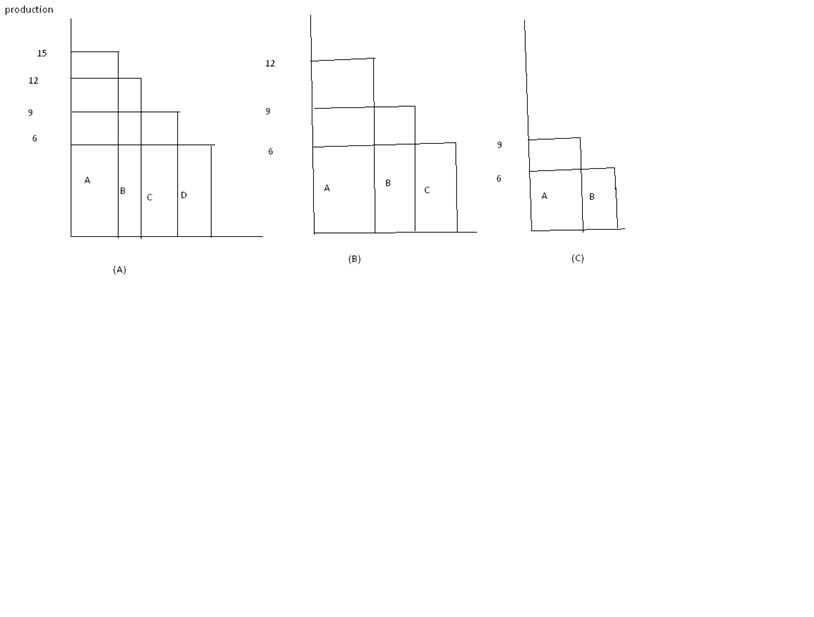Ricardian Theory of Rent.
Rent: – the term rent can be variously defined as:
Ordinary meaning: – In ordinary sense, rent refers to the hiring charges of anything of value; e.g. charges for hiring a house, a cart etc.
Economic rent: – according to classical economists: “economic rent is a price of land. It is paid to the landlords by the tenant for the use of land.
RICARDIAN THEORY OF RENT
Introduction: – the explanation that how rent arises, is called the theory of rent. The classical theory of rent is associated with the name of well known British economists “David Ricardo”. He presented this theory in his book “Principal of political economy and taxation”. He considered “land” to be a fixed factor of production and used the concept of economic rent. He believed that, rent arises due to the original powers of the land. If a land is more fertile, it will have a higher rental value.
Statement of Ricardian Theory of Rent
According to David Ricardo:
“Rent is that portion of the produce of the earth which is paid to the land lord for the use of original and indestructible power of the soil”.
Example: – Ricardo has given the example of an island. People come to this island in groups. There are four types of land: A,B,C and D such that land A is the most fertile land; land B is less fertile than land A, similarly land C is less fertile than land B and land D is less fertile than land C, i.e., A>B>C>D in terms of fertility. It is further explained with the help of schedule.
| Input units | Mounds of wheat per acre | |||
| Land A | Land B | Land C | Land D | |
| 1 | 15 | 12 | 9 | 6 |
| 2 | 12 | 9 | 6 | 3 |
| 3 | 9 | 6 | 3 | 0 |
| 4 | 6 | 3 | 0 | -3 |
| 5 | 3 | 0 | -3 | -6 |
Explanation: – it is assumed that
Land “A” is cultivated” – land A is brought under cultivation first, because it is considered as most fertile. An investment of Rs. 1200 in the form of units of capital and labor is made on this land. It yields 15 mounds of wheat per acre.
Land B is cultivated: – now suppose that due to increase in population, the demand for wheat increases, which in result increases the prices of wheat. In this case, land B will be cultivated. The investment is same, but the production is 12 pounds per acre.
Land C is cultivated: – land C is brought under cultivation when the above two types of land is insufficient to meet the increased demand of people. One more unit of land A and land B is also cultivated with first unit of land C. the investment is again R.s 1200 but the production reduces to 9 pounds per acre/
Land D is cultivated: – another rise in price of wheat, in similar way, will permit land D to be cultivated. This will happen when the price of wheat is such that 6 mounds of wheat give R.s 1200 to be paid to the factors of production. Here, land D is no rent land or marginal land.
Mathematical calculation of rent: –
Total rent of land A : – = (15 + 12 + 9 + 6) –(6 *4)
=42 – 24 = 18 mounds
Total rent of land B: –
= (12 + 9 + 6) – (6* 3)
= 27-18 = 9 mounds
Total rent of land C: –
= (+6)-(6*2)
= 15-12=3 mounds
Total rent of land D: –
= (6) – (6*1)
= 6-6= 0 mounds
Note: – we can calculate rent in terms of money by multiply each mound of rent with Rs. 200, which is the price of per mound of wheat.

Explanation: – in the above diagram, the types of land are measured along X-axis and production along y-axis. The shaded area in the diagram shows rent of different lands. The price of wheat in the market is fixed according to the production of last cultivated land i.e. D.
Assumptions: – Ricardian theory of rent is based on certain assumptions, which are as follows.
Difference in fertility: – all the units of land differ in fertility and location.
Knowledge of land fertility: – it assumed that fertility of land is known before cultivation and the best land is cultivated first.
Law of diminishing return: – it is supposed that the return is decreased with increase in units of land under cultivation.
Perfect competition: – there is a perfect competition among cultivators and they have the same cost of production and cultivation of land.
No rent of land: – it is assumed that rent is determined from no rent land or marginal land, which has some cost and revenue.
Equal use of land: – it is assumed that land is used for the same purpose & same quality of crop is sown.
Criticism: – this theory is criticized on the following grounds.
Power of the land: – the power of the land is not original and indestructible. Fertility of land is decreased due to continuous cultivation, and it will be increased by modern methods of cultivation, better seeds & good irrigation system.




Comments are closed.